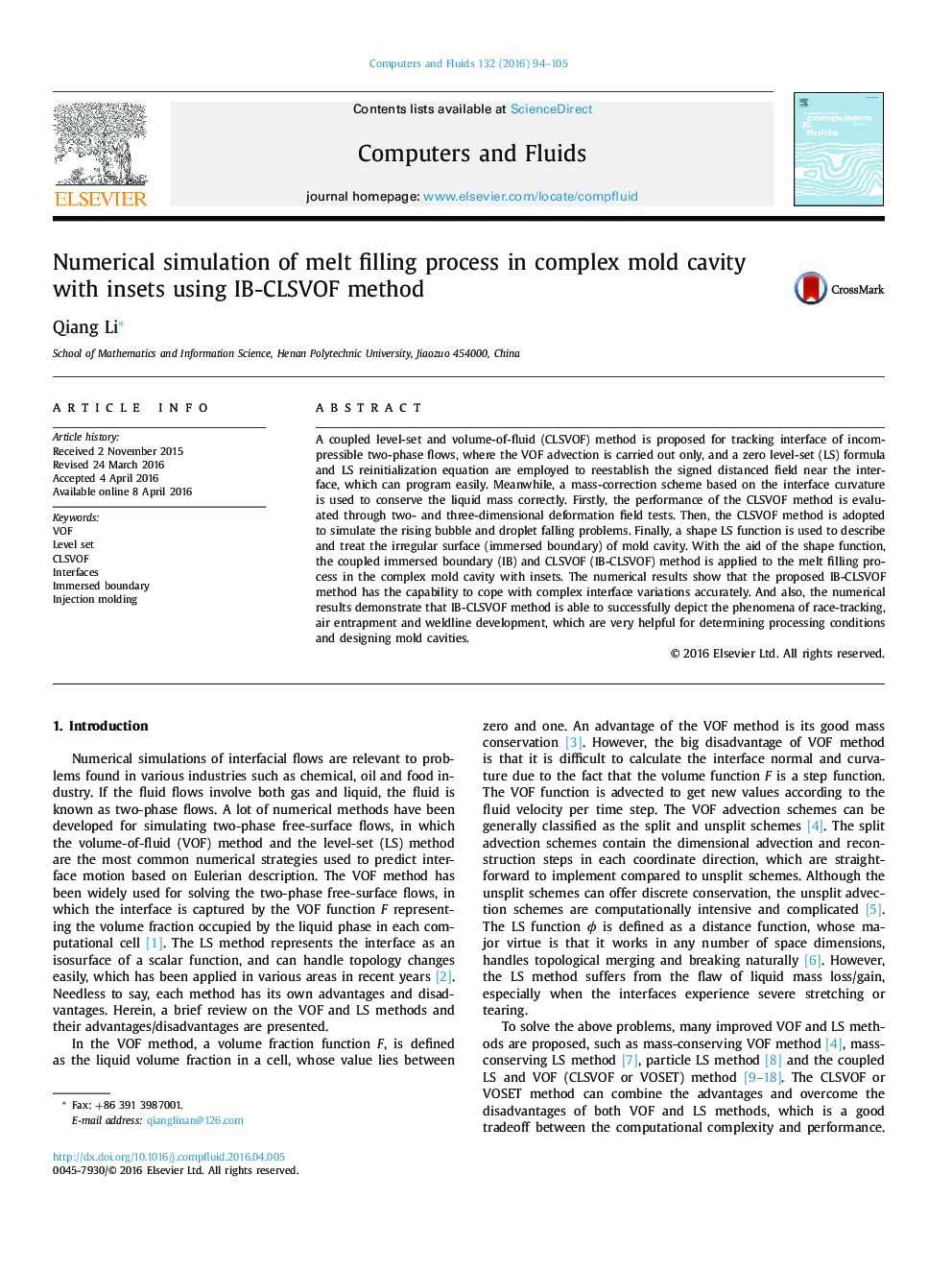| Article ID | Journal | Published Year | Pages | File Type |
|---|---|---|---|---|
| 761334 | Computers & Fluids | 2016 | 12 Pages |
•A new coupled level-set and volume-of-fluid (CLSVOF) method is proposed.•A local mass-correction method is used to conserve the liquid mass.•The shape-LS function is employed to describe the immersed boundary of mold cavity.•The IB-CLSVOF method is applied to 3D melt filling process in mold with insets.•The IB-CLSVOF method can depict some important physical phenomena successfully.
A coupled level-set and volume-of-fluid (CLSVOF) method is proposed for tracking interface of incompressible two-phase flows, where the VOF advection is carried out only, and a zero level-set (LS) formula and LS reinitialization equation are employed to reestablish the signed distanced field near the interface, which can program easily. Meanwhile, a mass-correction scheme based on the interface curvature is used to conserve the liquid mass correctly. Firstly, the performance of the CLSVOF method is evaluated through two- and three-dimensional deformation field tests. Then, the CLSVOF method is adopted to simulate the rising bubble and droplet falling problems. Finally, a shape LS function is used to describe and treat the irregular surface (immersed boundary) of mold cavity. With the aid of the shape function, the coupled immersed boundary (IB) and CLSVOF (IB-CLSVOF) method is applied to the melt filling process in the complex mold cavity with insets. The numerical results show that the proposed IB-CLSVOF method has the capability to cope with complex interface variations accurately. And also, the numerical results demonstrate that IB-CLSVOF method is able to successfully depict the phenomena of race-tracking, air entrapment and weldline development, which are very helpful for determining processing conditions and designing mold cavities.
